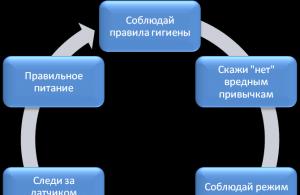VR6 is official name in-line offset units, and VR is an abbreviation formed from two German words "Verkürzt Reihenmotor", which in translation means "shortened inline engine»; the number 6 indicates the number of cylinders. Below we will try to understand the features of this engine, the history of its origin, the advantages and disadvantages, and also consider its various modifications.
Origin story
The VR6 first entered service in Europe in 1991 on Volkswagen cars Passat and Volkswagen Corrado, and in 1992 in North America. The Passat, Passat Variant and the American version of the Corrado were equipped with 2.8-liter engines, and two volkswagen The Corrado and Passat Syncro already had a 2.9 liter engine. Ferdinand Piech and his team made a real breakthrough in engine building when they invented a V-shaped six-cylinder engine with a camber angle of 15 °.
In 1997, one cylinder was removed from the VR6, so the VR5 was created - the first V-twin engine with an unpaired number of cylinders and a volume of 2.3 liters, and it was equipped with Passat car, and in 1999 - Golf and Bora. In the same year, a 2.8-liter 24-valve engine with a power of 204 hp was modified. and torque 265 N.m. In 2003, the development of the engine took place by increasing its working volume. For example, Volkswagen Golf The R32 was equipped with a 3.2 liter engine. For the market North America in 2005, an engine was developed with a camber angle of 10.6 ° and a volume of 3.6 liters.
Interesting! For motor cooling Bugatti Veyron ten radiators are used.
Engine Features

The VR6 is built asymmetrically, which is typical of in-line units and which distinguishes it from the V6, which is symmetrical about the crankshaft. One side of the engine intake manifold, and on the other - graduation. All six cylinders are V-shaped at 15° (traditional V-engines are either 60° or 90°) in one short block, making it much lighter than any V6 of the same size, and the staggered cylinder arrangement rather than in a line, makes the block shorter.
It is very compact, with both banks of cylinders covered by a single common head, which is not the case in a conventional V engine, making it much smaller in length and width. The first twelve-valve VR6 engines had factory indexes "AAA" and "ABV". Later, other modifications appeared in the line Volkswagen engines that came out of this layout.
Advantages of VR6 engines
Volkswagen, when creating this engine, wanted to make a six-cylinder engine with a short block, since a simple V-engine was too wide due to the large camber of the cylinders, which the developers really did not like, and besides, a motor of this design is difficult to use in machines with a transverse the location of the unit. The invention of the inline-shifted engine made it possible to install 6-cylinder engines under the hood already existing models cars with a transverse engine, while without significant alterations.
Disadvantages of VR6
 It has almost nothing left of the balance of the inline 6-cylinder engine due to the unusual placement of the cylinders, and additional shafts are installed to balance. This moment, together with the unusual design of the timing, led to the fact that such an engine is very expensive to manufacture. And this is its main drawback. The opportunity to make the VR6 compact proved to be more important than reducing the cost of the engine.
It has almost nothing left of the balance of the inline 6-cylinder engine due to the unusual placement of the cylinders, and additional shafts are installed to balance. This moment, together with the unusual design of the timing, led to the fact that such an engine is very expensive to manufacture. And this is its main drawback. The opportunity to make the VR6 compact proved to be more important than reducing the cost of the engine.
Did you know? Estimated sales Volkswagen Passat W8 fell short of expectations, and this car was discontinued.
What cars are found on
The VR6 engine is installed mainly on cars Volkswagen: Golf, Golf R32, Jetta, Vento, Phaeton, Corrado, Passat, Beetle, Touareg, Sharan, Transporter, as well as Audi A3, TT, Q7, Seat Leon.
VR6 as the basis for something more
Ferdinand Piech's team did not stop there in their desire to fit a six-cylinder engine into a hatchback, and they wanted to equip the Passat with an eight-cylinder, twelve-cylinder, or even more engine. The consequence of this was the appearance of W-shaped motors, but few believed in the success of such an idea.
It's important to know!The main and, perhaps, the only drawback W-motors- their thin connecting rods, only 13 millimeters, since their crankshaft is much shorter than that of V-shaped ones with the same number of cylinders, and the main advantage of motors of this design is their compactness.
 It was invented in 1995, and in 2001 it was first installed on the Volkswagen Passat, but they stopped equipping these cars due to the high price, big expense fuel and minor flaws, a total of fifty thousand cars were produced. This is an engine with two VR4 offset-in-line blocks with a small camber angle of only 15°, combined in a v-shape, where the camber angle is 72°. Engine weight 190 kilograms, maximum power 275 hp. at 6 thousand revolutions per minute, and the maximum torque is 370 N.m.
It was invented in 1995, and in 2001 it was first installed on the Volkswagen Passat, but they stopped equipping these cars due to the high price, big expense fuel and minor flaws, a total of fifty thousand cars were produced. This is an engine with two VR4 offset-in-line blocks with a small camber angle of only 15°, combined in a v-shape, where the camber angle is 72°. Engine weight 190 kilograms, maximum power 275 hp. at 6 thousand revolutions per minute, and the maximum torque is 370 N.m.
Interesting to know!The first six-liter W12 engine with 600 hp. was released for the concept coupe of the same name, it turned out to be very compact: 513 mm long, 710 mm wide, and weighing 239 kg. All this thanks to the use of aluminum. And the car itself was presented in 2001 at the Thai Auto Show.
 This is very rare engine internal combustion, which includes twelve cylinders, which have a W-shaped arrangement in three rows of four, or in four rows of three cylinders. Its pistons rotate one common crankshaft. The W-shaped layout is more compact and saves space under the hood, and also due to this compactness, power and power are enhanced. The cylinders are located very close to each other, and because of this, it is necessary to upgrade the cooling system. In the engine of this type cooling of each cylinder is provided.
This is very rare engine internal combustion, which includes twelve cylinders, which have a W-shaped arrangement in three rows of four, or in four rows of three cylinders. Its pistons rotate one common crankshaft. The W-shaped layout is more compact and saves space under the hood, and also due to this compactness, power and power are enhanced. The cylinders are located very close to each other, and because of this, it is necessary to upgrade the cooling system. In the engine of this type cooling of each cylinder is provided.
Important!Vehicles with W12 engine are Bugatti Chiron, Audi A8, Volkswagen Passat W8 (B5), Volkswagen Phaeton and some World War II aircraft.
 This engine is installed in the Bugatti Veyron, and Volkswagen Group the only ones to produce the W16 engine today. This is a sixteen-cylinder internal combustion engine that has four valves per cylinder. The weight of the engine is about 400 kilograms, and the length is 71 centimeters. Its maximum power output is 736 hp at 6 thousand rpm and maximum torque is 1250 N.m. The W16 is an elongated form of the W12 engine and was introduced with the Bentley Hunaudieres and later also used in the Audi Rosemeyer.
This engine is installed in the Bugatti Veyron, and Volkswagen Group the only ones to produce the W16 engine today. This is a sixteen-cylinder internal combustion engine that has four valves per cylinder. The weight of the engine is about 400 kilograms, and the length is 71 centimeters. Its maximum power output is 736 hp at 6 thousand rpm and maximum torque is 1250 N.m. The W16 is an elongated form of the W12 engine and was introduced with the Bentley Hunaudieres and later also used in the Audi Rosemeyer.
When we are talking about car engines, the future of the automotive industry is predetermined. It is already clear that soon all cars will be equipped with turbocharged power units. So, unfortunately, in the coming years the market automotive engines will be pretty boring compared to the last century, which is an incredible time for the auto industry. After all, the first developments automotive world remembered for incredible crazy ideas. We offer you ten of the best car engines in terms of complexity, which were created by talented engineers.
10) Volkswagen W8

Volkswagen has always been famous for strange yet brilliant engines that have amazing designs. The legendary W8 engine is no exception.

The motor uses in its design some parts of the BP5 and VR6 power units.
The W8 engine, despite its 4-liter volume, looks very compact. This crank engine essentially combines two four-cylinder blocks (two engines are connected to each other at an angle of 15 degrees), working with one common crankshaft.
9) Lancia Delta S4

To get the most out of a modest 1.8 liter, Lancia-Abarth engineers created an incredible engine with a crossed valve formation system. Motor Lancia Delta S4 equipped exhaust manifold, which is connected to each cylinder through one exhaust valve (on each side of the cylinder head). The inlet ports are connected to a central vertical manifold. This configuration of the power unit was called F.I.D., and Fiat patented it.
By the way, this engine design patent provided for multiple variations. But in the end, Lancia-Abarth Triflux opted for a design that uses a single exhaust valve, which was located in close proximity to two intake valves, which left enough room for the spark plug.
That is, the engine had three gas flows (two side exhaust and one vertical intake).
The valves of this engine are actuated by two camshafts, which have alternating intake and exhaust valves.
8) Porsche Fuhrmann

It takes a record time of 120 hours to assemble this engine. But the most difficult part is preparing for the assembly process, which can take from 8 to 15 hours.
The Porsche Fuhrmann engine was developed to enable Porsche cars to win the 24 Hours of Le Mans.
Recall that in the 1950s, Porsche released the first sports model designed for racing. The car received the index "Porsche 550". As a result, the sports car not only made an impression on the public, but also became the winner of prestigious competitions more than once. So the Porsche company declared itself to the whole world.
Inspired by success, Porsche engineers began to develop new motor in order to deutsche mark won the Le Mans race.
As a result, Porsche designers developed the Type 547 engine (1.5 liter with two 110 hp carburetors) with an incredibly complex bearing mechanism and two camshafts.
It is worth noting that the engine block was cast from an aluminum alloy, and the cylinders were coated with a special chrome compound.
7) Oldsmobile Jetfire V8
The Oldsmobile Jetfire was developed from a compact two-door model F-85. A unique aluminum V8 turbo engine was installed under the hood of the car. This power unit had an incredible compression ratio of 10.25:1. For today, of course, this engine compression ratio does not look large, but we recall that in those years there were no knock sensors in the world and therefore the compression ratio has always been a headache for engineers.

In combination with a high compression ratio and forced induction, there was a risk of damage to the power unit during operation.
In order to reduce engine detonation, engineers came up with the use of special liquid(system "Turbo Rocket Fluid"). It was a mixture of distilled water, methanol and corrosion inhibitor. This fluid cooled the combustion chamber and prevented pre-ignition, thus avoiding detonation.

For motorists in 1962, this powertrain could be safely classified as science fiction, since the engine could produce incredible performance and acceleration.
Apparently, the Oldsmobile Jetfire V8 Turbo Rocket Fluid engine was the first mass-produced turbocharged powertrain in the automotive industry.
6)Cizeta V16T
In the 80s, Cizeta Automobili appeared in the automotive industry, which was created by former Lamborghini employees. The company's goal was to create a supercar that could become an alternative for fans.
As a result, the company in 1988 introduced the Cizeta V16T concept car, which had an external resemblance to the Lamborghini Diablo sports car.
As you might guess from the name, the car was equipped with a 16-cylinder engine. True, in fact, this power unit was essentially a "sandwich" of two 8-cylinder Lamborghini engines connected together.
Officially, the production of the car began in 1991 and continued until 1995. In total, 20 cars were produced, which were made by hand to order.

The Cizeta V16T engine had a compression ratio of 9.3:1. The engine also used eight camshafts (two for each row of cylinders), which pushed 4 valves per cylinder.

Despite the complexity of the design, the engineers failed to obtain incredible power engine. The most that could survive from this unusual hybrid is 560 hp, which is available at 8000 rpm.
The motor was paired with a 5-speed mechanical box gears. As a result, the supercar overcame acceleration from 0 to 100 km in 4.4 seconds. Max speed was 326 km / h.
5) Bugatti W16
The W16 Bugatti engine has arguably become one of the most powerful and most complex automotive powertrains in the world. The most amazing thing is that, having a strange and very complex configuration, the 16-cylinder engine is a reliable and incredibly high-quality power unit.
The W16 Bugatti engine is equipped with 64 valves and four turbines.

In fact, the power unit is a hybrid of two 8-cylinder turbocharged engines. Unit power in modern modification is 1500 hp
This power unit was installed in the Bugatti Veyron supercar, which allowed the car to become the fastest on the planet.
4) Mercedes-AMG 7.3 M120

It's monstrous powerful version The Mercedes M120 engine is very rare. Recall that this motor was installed on the tuning model SL73 AMG in 129 body. Thanks to deep tuning, the atmospheric 7.3-liter 12-cylinder engine had a power of 678 hp. Initially, the M120 engine in a non-tuning modification had a volume of 6.0 liters and a power of 408 hp.
3) Cadillac V8-6-4

In 1981, General Motors introduced for Cadillac cars unusual engine, which essentially had the world's first cylinder deactivation system.
internal combustion. Its device is very complex, even for a professional.
When buying a car, first of all look at the characteristics of the engine. This article will help you understand the basic parameters of the engine.
Number of cylinders. Modern cars have up to 16 cylinders. This is a lot. But the fact is that piston internal combustion engines with the same power and volume can differ significantly in other parameters.
How are the cylinders arranged?
Cylinders can be arranged in two types: in-line (sequential) and V-shaped (two-row).
At high angle collapse is significantly reduced dynamic characteristics, but this increases the inertia. With a small camber angle, inertia and weight are reduced, but this leads to rapid overheating.
boxer engine
There is also a radical boxer engine with a camber angle of 180 degrees. In such an engine, all the disadvantages and advantages are maximum.

Consider the advantages of such a motor. This engine is easily built into the very bottom engine compartment, which allows you to lower the center of mass and, as a result, increases the stability of the car and its handling, which is not unimportant.
Opposed reciprocating internal combustion engines have reduced vibration load and are fully balanced. They are also shorter than single row motors. There are also disadvantages - the very width of the engine compartment of the car is increased. boxer engine installed on cars Porsche brands as well as Subaru.
Varieties of the engine - W-shaped
On the this moment, the W-shaped engine that Volkswagen produces includes two piston groups from VR type engines, which are at an angle of 72 ° and due to this, an engine with four rows of cylinders is obtained.
Now doing W engines with 16, 12 and 8 cylinders.

W8 engine- four-row with two cylinders in each row. It has two balance shafts that rotate twice as fast as the crankshaft, they are needed to balance the forces of inertia. This motor has a place to be on a car - VW Passat W8.
W12 engine - four-row, but already three cylinders in each row. It is found on VW Phaeton W12 and Audi A8 W12 cars.
W16 engine - four-row, four cylinders in each row, it is only on the Bugatti Veyron 16.4 car. This 1000 hp engine and in it the strong influence of inertial moments negatively affecting the connecting rods was reduced by increasing the camber angle to 90 °, and at the same time, the piston speed was reduced to 17.2 m / s. True, the dimensions of the engine have increased from this: its length is 710, width 767 mm.
And the rarest type of engine is row-V-shaped (also called - VR, see the top right picture), which is a combination of two varieties. VR engines have a small camber between the cylinder banks, only 15 degrees, which made it possible to use one common head on them.
Engine capacity. From this setting piston engine Internal combustion depends on almost all other characteristics of the engine. In the case of an increase in engine size, there is an increase in power, and as a result, fuel consumption increases.
engine material. Engines are usually made from three types material: aluminum or its alloys, cast iron and other ferroalloys, or magnesium alloys. In practice, only resources and engine noise depend on these parameters.
The most important engine parameters
Torque. It is generated by the engine at maximum traction force. The unit of measurement is new meters (nm). Torque directly affects the “engine elasticity” (ability to accelerate at low speeds).
Power. Unit of measurement - horsepower(hp) Acceleration time and car speed depend on it.
Max RPM crankshaft(rpm). They indicate the number of revolutions that the engine is able to withstand without losing the strength of resources. A large number of revolutions indicates sharpness and dynamism in the character of the car.
Important in the car and consumption characteristics
Butter. Its consumption is measured in liters per thousand kilometers. The brand of oil is indicated by xxWxx, where the first number indicates the density, the second the viscosity. Oils with high density and viscosity significantly increase the reliability and durability of the engine, and oils with low density give good dynamic characteristics.
Fuel. Its consumption is measured in liters per hundred kilometers. IN modern cars you can use almost any brand of gasoline, but it is worth remembering that low octane number affects the drop in strength and power, and an octane number above the norm reduces the resource, but increases power.









